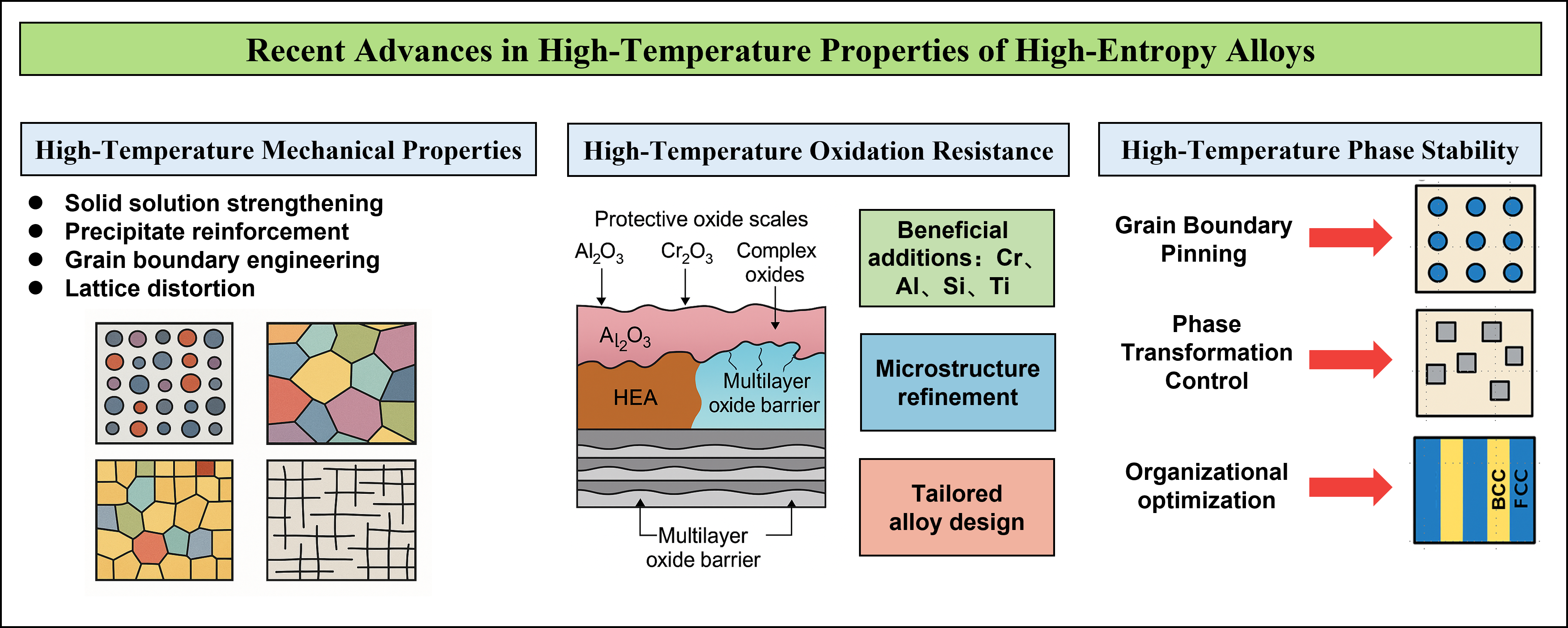Found 1 results
Open Access
Review
11 June 2025Recent Advances in High-Temperature Properties of High-Entropy Alloys
High-temperature alloys are critical for advanced thermal components in aerospace and energy industries. Conventional alloys, which rely on a single principal element with limited alloying additions, often exhibit insufficient phase stability and rapid oxidation at extreme temperatures. In recent years, high-entropy alloys (HEAs) have emerged as revolutionary candidates for high-temperature applications, overcoming the limitations of conventional alloys through their unique multi-principal element design and exceptional performance. This review systematically examines the latest progress in HEAs’ key high-temperature properties: tensile properties, creep resistance, oxidation resistance, and phase stability. Research demonstrates that HEAs achieve remarkable mechanical properties at elevated temperatures through multiple mechanisms, such as lattice distortion effects, precipitation of ordered L12-structured phases, and refined grain boundary engineering. For instance, refractory HEAs like MoNbTaVW and Hf-Nb-Ti-V systems exhibit superior creep resistance at temperatures exceeding 1600 °C, outperforming traditional nickel-based superalloys. The slow diffusion of oxygen and the formation of multi-component oxide layers enhance the high-temperature oxidation resistance of high-entropy alloys. Additionally, HEAs display excellent phase stability under thermal exposure, driven by high configurational entropy and optimized microstructural designs, including nanoscale lamellar phases and coherent precipitates. Despite these advances, challenges remain in balancing mechanical strength with ductility, ensuring long-term durability under cyclic thermal-mechanical loads, and tailoring compositions for extreme service conditions. Future efforts should integrate machine learning, computational modeling, and high-throughput experiments to accelerate the discovery of novel HEA systems and validate their performance in practical applications. By addressing these challenges, HEAs are poised to revolutionize material solutions for next-generation aerospace engines, nuclear reactors, and high-efficiency energy systems.
